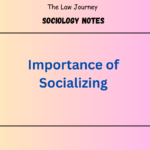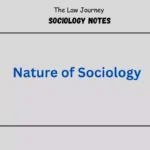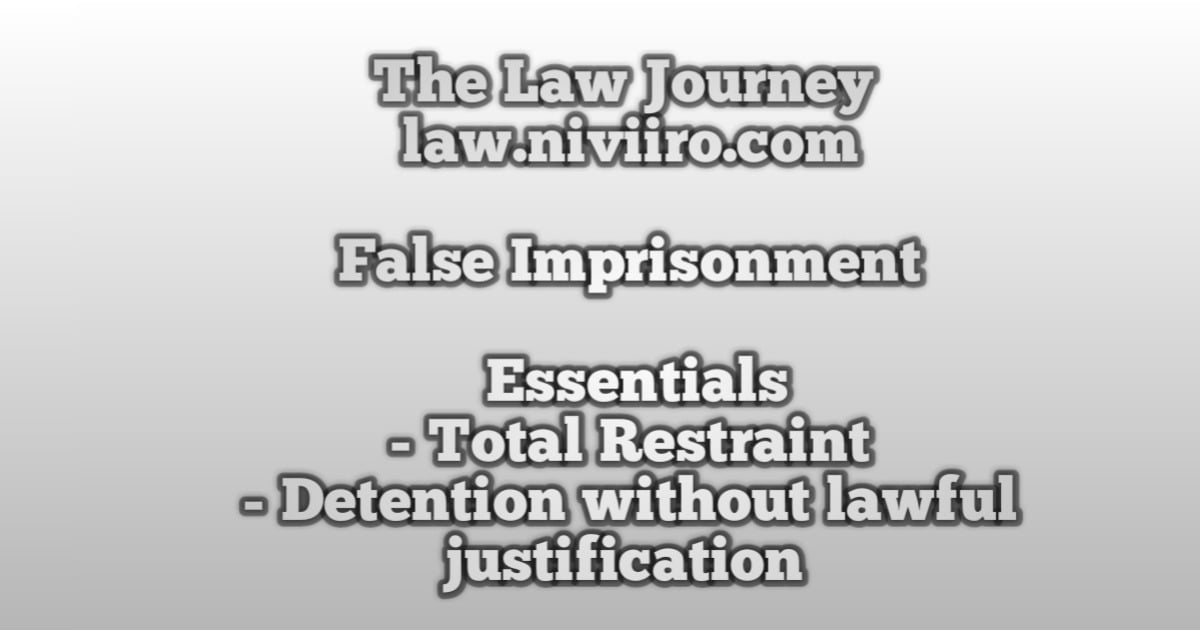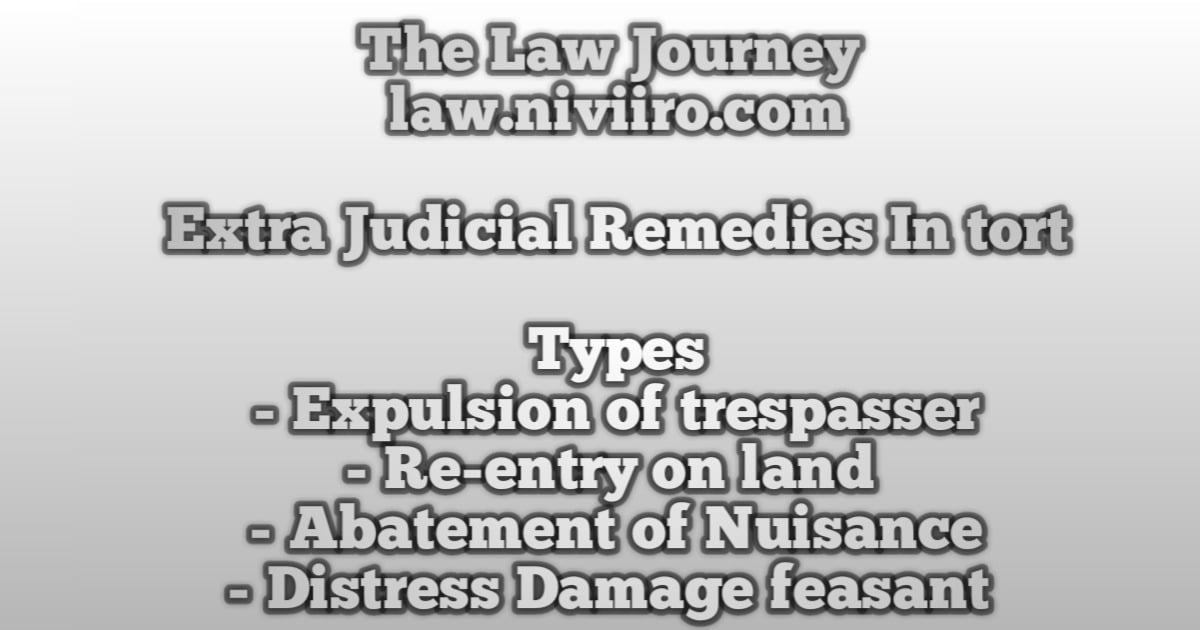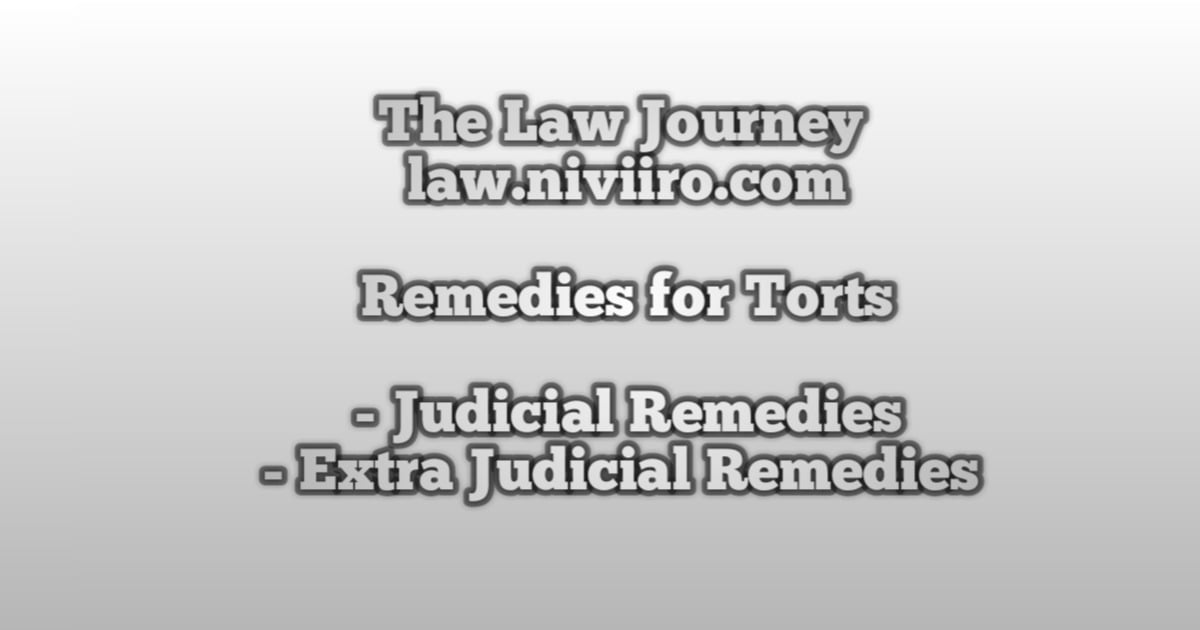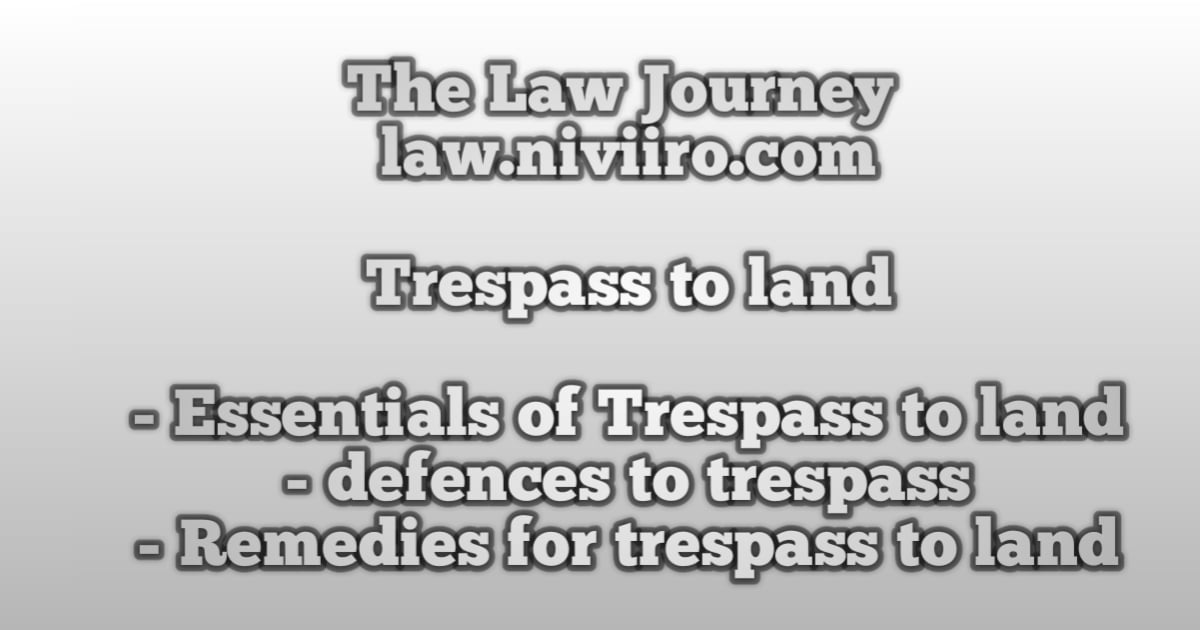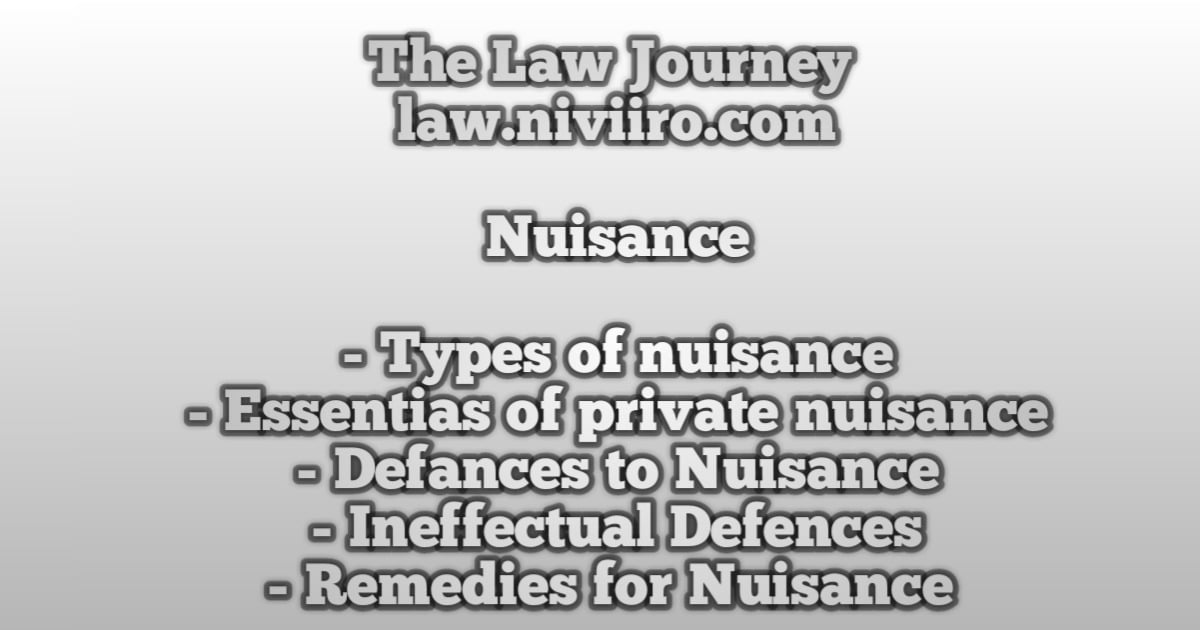False imprisonment occurs when someone restricts someone’s free mobility, which is movement of one’s own free choice. It might be in a field, a house, or a roadway. False imprisonment is entire constraint or confinement of a man’s liberty.
To hold a False imprisonment, there must be two basic elements: first, there must be a total restraint on the plaintiff’s liberty, and second, it must be without any lawful justification.
Essentials for False imprisonment
Total restraint
False imprisonment occurs when entire constraint on someone’s liberty is enforced. When someone compels someone to be in a position against his will, for example, X is on the roof and Y deliberately takes away the ladder, leaving X with no alternative but to remain there against his will, this is considered absolute constraint.
In Bird v Jones (1845) 7 QB 742, the defendants forbade the plaintiff from crossing a bridge by the footway but permitted him to do so via the vehicle way. There was no wrongful imprisonment because the constraint was not absolute.
Detention without lawful justification
For wrongful detention, there must be entire limitation on liberty without any legal justification.In another instance, Kundan Lal v. Dr. Des Raj, (1954) 56 PLR 331, the SP annulled the bail bond and ordered the plaintiff’s rearrest on an application filed by the guarantor. Sub-inspector was re-arrested on SP’s orders. The Court ruled that the SP lacked authority to rescind the bail bond and that the order of rearrest was invalid. Both the SP and the sub-inspector were charged with false imprisonment.
Defences in False imprisonment
There are some instances of Defences as mentioned below:
Reasonable condition
It will not be a case of False imprisonment if a man is prevented from leaving the premises because he has not satisfied the reasonable conditions under which he arrived.
In Herd v. Weardale Steel, Coal and Coke Co., 1915 AC 67, a worker entered a coal mine at 9.30 a.m. with the intent of working. He had the right to leave the mine at 4.30 p.m. When he arrived, he erroneously refused to undertake certain tasks and sought to leave the mine at 11 a.m. However, the employer declined, claiming that the elevator could not be used until 1.30 p.m., despite the fact that it was available. According to the Court, this was not a case of False imprisonment.
Judicial Authority
In our nation, Judicial Officers are immune from liability for doing the incorrect thing while doing their duties, hence a Judicial Officer cannot be sued for false imprisonment.
“No Judge, Magistrate, Collector, or other person acting judicially shall be liable to be sued in any civil court for any act done or ordered within the limits of his jurisdiction: provided that he at the time, in good faith, believed himself to have jurisdiction to do or order the act complained of……”
The aforesaid clause in the statute allows legal authorities to fulfil their judicial obligations within their jurisdiction while also protecting them even if their act done or ordered is determined to be erroneous, irregular, or even unlawful. Furthermore, a judicial official who reaches outside his jurisdiction area while performing his responsibilities and does so in good faith thinking the region within his authority is not accountable.
Jurisdiction does not imply the ability to conduct or command the contested act, but rather the authority of the judicial official to act in the issue. But, if a judicial officer acts maliciously or knowingly acted outside his jurisdiction, then he may be held liable. (Anwar Hussain v. Ajoy Kumar Mukherjee, MANU/SC/0374/1965 : AIR 1965 SC 1651: 1965 Cr LJ 686).
Arrest by Police
If a policeman making an arrest in execution of a judicial order notwithstanding any defect of jurisdiction by judge or magistrate, no action will lie against the policeman. However, this protection from liability does not apply to any irregularities in the execution of the order, and there is no defence if someone other than the person mentioned in the warrant is arrested, regardless of whether the person executing the arrest is innocent.
The defence of legitimate authority cannot be used if the police officer does not have the arrest warrant. If a police officer arrests a person on reasonable suspicion of a crime without a warrant, he must tell the individual of the real circumstances for the arrest, and if he fails to do so, he is liable for false imprisonment.
Arrest on complaint before a judicial officer
In Austin v. Dowling, 1870 LR 5 CP 534.-if a party submits a complaint before a judicial officer and the judicial officer issues a warrant on which the person charged is imprisoned, the party submitting the complaint is not responsible for wrongful imprisonment. The rationale offered here is because a man is answerable for his own conduct or the acts of his agents, and a judge is no one’s agency. The judge acts alone in his judicial capacity and discretion.
Remedies for False Imprisonment
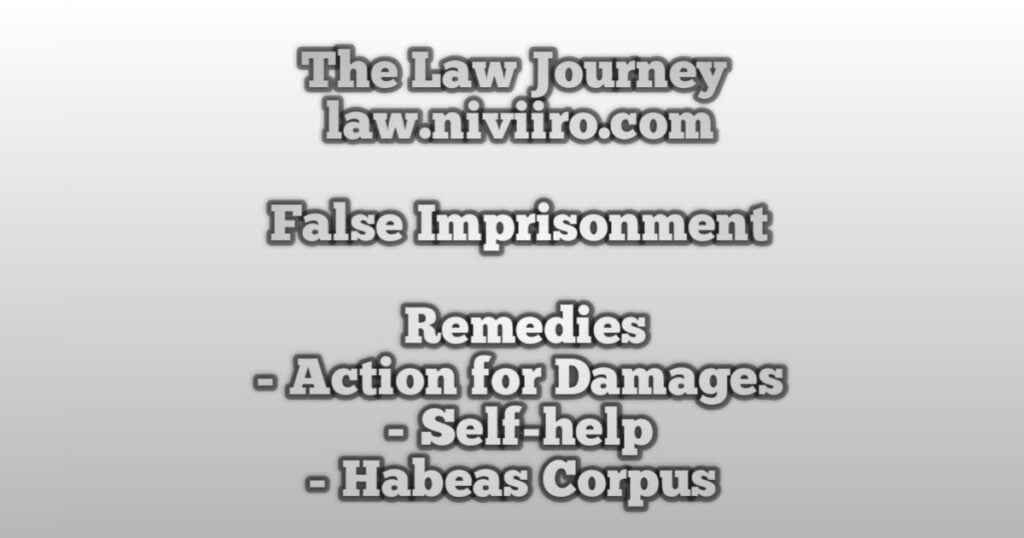
1.Action for damages
The plaintiff is entitled to general damages recompense for the humiliation or suffering caused by the trespass. Even if there is no significant physical harm, damages should be proportionate to the injury and irritation caused. Damages will vary depending on the facts of each case. However, when the plaintiff’s allegation involves oppressive, arbitrary, and unconstitutional activity by the State or its agents, they should be exemplary.
In the instance of false detention, compensation may be sought not only for loss of liberty, but also for shame, mental anguish, and humiliation. The defendant bears the burden of proving reason in a trespass suit. Thus in case of false imprisonment, the plaintiff is only required to prove that he was imprisoned by the defendant or his servants. It is then for the defendant to prove the lawful justification for the same and it is not for the plaintiff to prove its absence. It is not necessary for the plaintiff to prove any wrongful intention, malice, negligence, etc. on the defendant’s part.
Self-help
A person is authorised to use reasonable force in order to have an escape from detention instead of waiting for a legal action.
Habeas Corpus
It is a faster remedy for obtaining the release of an unlawfully imprisoned individual (Articles 32/226 of the Constitution). The person detaining is obligated by this writ to present the detained individual before the court and justify the confinement. If the court determines that the detention is without any just or reasonable basis, it will order the detainee’s immediate release. If such a person is freed before the writ is resolved, the court may provide compensation as supplemental remedy.
Distinction between False Imprisonment & Malicious prosecution
| False Imprisonment | Malicious prosecution |
| 1. Total restraint or total confinement of a man’s liberty is false imprisonment. | 1. Malicious prosecution consists in instituting wrongful criminal, or bankruptcy, or liquidation proceedings, maliciously and without reasonable and probable cause. When such prosecution causes actual damage to the party prosecuted, it is a tort for which he can bring an action. |
| 2. The defendant must prove that he had reasonable justification to detain the plaintiff (Herd V. Steel Co., Robinson V. Balmain ferry Co.) | 2. The plaintiff must allege and prove that was no reasonable or probable cause to prosecute the plaintiff. |
| 3. Not necessary to prove malice. | 3. Malice must be proved by the plaintiff. Otherwise, he fails (Dr. Abarth’s case) |
| 4. Mistake of facts would not be a good defence. | 4. Mistake may be a good defence. |
| 5. Not necessary to prove actual Damage because its actionable per se. | 5. Actual Damage must be proved by the plaintiff. |
Related Post
What do mean by False imprisonment ?
alse imprisonment occurs when someone restricts someone’s free mobility, which is movement of one’s own free choice. It might be in a field, a house, or a roadway. False imprisonment is entire constraint or confinement of a man’s liberty.
What are the two basic elements for proving False imprisonment ?
To hold a False imprisonment, there must be two basic elements: first, there must be a total restraint on the plaintiff’s liberty, and second, it must be without any lawful justification.
Defences in False imprisonment ?
There are some instances of Defences as mentioned below: Reasonable condition, Judicial Authority, Arrest by Police, Arrest on complaint before a judicial officer.
What types of remedies available in False imprisonment ?
Three types of remedies available against False imprisonment. That are ; Action for damages, Self-help and Habeas Corpus.
Reference
- Law of Torts by Ratanlal and Dhirajlal
- Law of Torts by J.N. Pandey
- P.S.A. Pillai’s – Law Of Tort
- Law of Torts by RK Bangia (22nd Edition)
- Universals Law of Torts
- A.K Jain law of torts







